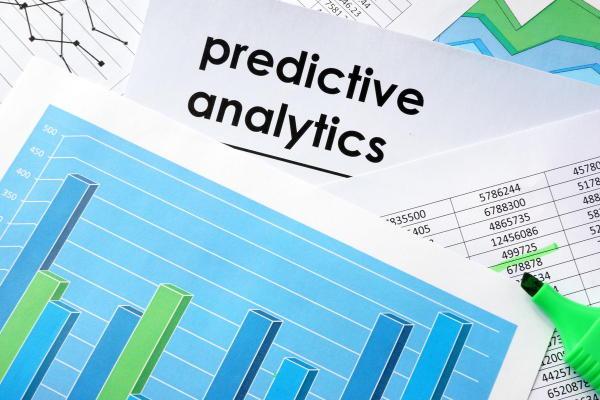
Predictive analytics is a transformative tool in digital marketing that uses data, statistical algorithms, and machine learning to predict future outcomes. It empowers businesses to anticipate customer behavior, optimize campaigns, and make data-driven decisions. Here’s a detailed exploration of predictive analytics in marketing, covering its processes, applications, and benefits:
Table of Contents
ToggleWhat is Predictive Analytics in Marketing?
Predictive analytics involves using historical and real-time data to forecast future events and trends. In marketing, it helps predict customer behaviors, identify opportunities, and optimize strategies for better outcomes. It combines advanced technologies with data science to uncover patterns and deliver actionable insights.
Predictive analytics involves using historical and real-time data to forecast future events and trends. In marketing, it helps predict customer behaviors, identify opportunities, and optimize strategies for better outcomes. It combines advanced technologies with data science to uncover patterns and deliver actionable insights.
How Predictive Analytics Works:
Data Collection
Predictive analytics begins by gathering data from various sources, such as:
Internal Sources: Customer databases, purchase histories, and CRM systems.
External Sources: Social media trends, market research, and publicly available data.
Importance: The diversity and volume of data collected significantly affect the quality of predictions.
Data Cleaning and Preparation
Raw data often contains errors, inconsistencies, or irrelevant information.
How It’s Done:
Remove duplicates, fill in missing values, and standardize data formats.
Normalize data to ensure compatibility for analysis.
Importance: Clean data improves the accuracy of the predictive model.
Data Segmentation
The prepared data is grouped into meaningful categories for analysis.
Examples of Segmentation:
Demographics (age, gender, location).
Behavioral patterns (purchase history, website visits).
Importance: Proper segmentation ensures the model understands relevant relationships in the data.
Model Selection and Building
Choose the appropriate algorithm based on the type of prediction needed.
Types of Algorithms:
Regression Analysis: For continuous variables like sales forecasts.
Classification Models: To categorize data, such as identifying high-value leads.
Clustering Models: To group similar customers for personalized marketing.
Importance: Selecting the right model determines the quality and reliability of predictions.
Training the Model
The predictive model is trained using historical data.
How It Works:
The model identifies patterns, trends, and relationships within the data.
It learns from past outcomes to predict future behaviors.
Example: Training a model on customer purchase history to predict upcoming trends.
Testing and Validation
Evaluate the accuracy of the model using new or unseen data.
How It’s Done:
Split data into training and testing sets (e.g., 80% training, 20% testing).
Measure performance metrics like accuracy, precision, or recall.
Importance: Validation ensures the model can make accurate predictions in real-world scenarios.
Deployment of the Model
Once validated, the model is deployed to make real-time predictions.
How It Works:
Integrate the model into marketing platforms like CRM or email marketing tools.
Generate insights and automate decision-making processes.
Example: A deployed model may send personalized recommendations to customers based on their browsing behavior.
Monitoring and Refinement
Even after deployment, the model must be monitored and updated regularly.
How It’s Done:
Use performance metrics to identify areas of improvement.
Retrain the model with new data to keep it relevant.
Example: Adjusting the model as consumer preferences shift over time.
Applications of Predictive Analytics in Marketing
Predictive analytics enhances marketing strategies by leveraging data to forecast customer behavior and trends. Here are the key applications:
Customer Segmentation
What It Does: Groups customers based on demographics, behavior, and purchase history.
Benefit: Enables targeted campaigns with personalized messaging.
Lead Scoring
What It Does: Ranks leads based on their likelihood to convert.
Benefit: Focuses resources on high-potential prospects, improving conversion rates.
Churn Prediction
What It Does: Identifies customers likely to leave or stop engaging.
Benefit: Implements retention strategies like special offers or personalized outreach.
Demand Forecasting
What It Does: Anticipates product or service demand trends.
Benefit: Optimizes inventory, reducing waste and improving profitability.
Personalized Marketing Campaigns
What It Does: Customizes campaigns based on individual preferences and behavior.
Benefit: Enhances engagement and boosts ROI.
Product Recommendations
What It Does: Suggests products based on browsing and purchase history.
Benefit: Drives upselling and cross-selling opportunities.
Price Optimization
What It Does: Analyzes market trends to set optimal prices.
Benefit: Balances competitiveness with profitability.
Campaign Performance Forecasting
What It Does: Predicts the success of marketing campaigns before launch.
Benefit: Informs adjustments for better outcomes.
Benefits of Predictive Analytics in Marketing
Increased ROI
Focus marketing efforts on high-impact strategies, improving return on investment.
Better Customer Retention
Anticipate customer needs and proactively address issues to enhance loyalty.
Improved Personalization
Tailor campaigns to individual preferences, creating meaningful interactions.
Data-Driven Decisions
Base strategies on reliable insights rather than assumptions.
Enhanced Efficiency
Streamline processes by automating data analysis and decision-making.
Challenges of Predictive Analytics in Marketing
Data Quality Issues
Poor-quality or incomplete data can lead to inaccurate predictions.
Solution: Invest in robust data collection and cleaning processes.
Privacy Concerns
Using customer data requires compliance with regulations like GDPR and CCPA.
Solution: Implement transparent policies and secure data storage.
Complexity
Building and maintaining predictive models can be technically demanding.
Solution: Collaborate with skilled data scientists or use user-friendly AI tools.
High Initial Investment
Implementing predictive analytics requires advanced tools and infrastructure.
Solution: Start small and scale up as you see results.
Best Practices for Predictive Analytics in Marketing
Define Clear Goals
Establish what you aim to achieve, such as boosting sales or improving customer retention.
Start with Quality Data
Ensure your data is accurate, complete, and up-to-date for reliable insights.
Choose the Right Tools
Use predictive analytics platforms like Salesforce Einstein, HubSpot, or Google Analytics.
Monitor and Refine Models
Continuously test and adjust models to maintain accuracy over time.
Integrate Across Channels
Apply predictive analytics consistently across email, social media, and advertising campaigns.
Future Trends in Predictive Analytics for Marketing
AI Integration
AI-powered tools will make predictive analytics more accessible and precise.
Real-Time Predictions
Advanced technologies will provide instant insights, allowing for on-the-fly adjustments.
Increased Focus on Privacy
Tools will adopt stricter data privacy measures to comply with regulations and build trust.
Advanced Personalization
Predictions will enable hyper-personalized experiences tailored to individual customer journeys.
Predictive analytics is a game-changer in marketing, enabling businesses to anticipate trends, optimize strategies, and drive growth. By leveraging data-driven insights and embracing best practices, marketers can create more personalized, efficient, and impactful campaigns. As technology advances, predictive analytics will become an indispensable tool for businesses aiming to stay ahead in the competitive marketing landscape.

